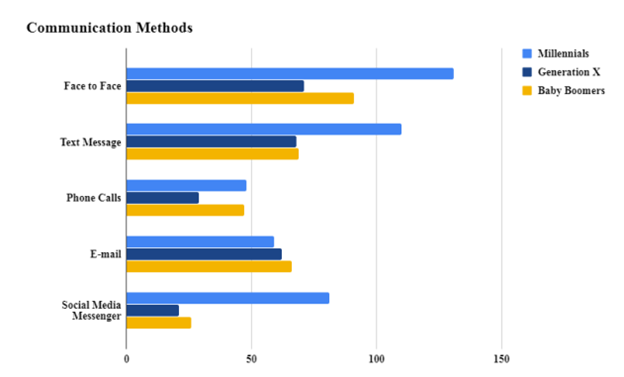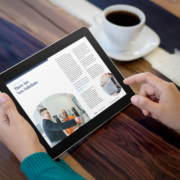Bridging the Gap: Communication and Student Interaction with Financial Aid
By: Sean Hudson, Sr. Consultant FAS
In the realm of education, effective communication with students is paramount to ensure seamless administrative processes and foster student success. Recognizing the diverse preferences of different generations when it comes to communication methods is key to optimizing these efforts. This blog entry delves into the significance of understanding generational communication preferences and explores the evolving landscape of student communication in the face of the COVID-19 pandemic.
Why does it matter?
As Financial Aid Directors, timely and efficient communication with students is vital to expedite processes such as file completion, verification, and aid disbursement. By effectively conveying the need for additional information or action, we can ensure that students are aware of their responsibilities and the importance of their responses. Timely file completion enables quicker aid disbursal, which in turn helps students manage expenses like purchasing books or paying bills. Thus, aligning our communication strategies with students’ preferred methods becomes imperative for successful outcomes.
Consistent Messaging for Effective Communication:
Maintaining consistent messaging across various communication channels is crucial, regardless of the method employed to connect with students. By standardizing the look, language, and subject lines of emails and letters, we can create a cohesive communication experience. At my previous institution, I introduced automated emails and letters with uniform headings and subject lines, which were sent at regular intervals for six weeks. If no response was received, a paper letter was automatically dispatched, with two letters sent within a month if necessary. Furthermore, advisors were alerted via email about students requiring follow-up calls. This multi-modal and automated process significantly improved our response rate and expedited file completion.
The chart below is from the journal article “Bridging the Gap: How the Generations Communicate” by Hannah Downs in the Concordia Journal of Communication Research 2019 Volume 6, Article 6.
Approximate Years for the Generations Baby Boomers 1946 – 1964 Generation X 1965 – 1980 Millennials 1981 – 1996 Does your preferred method of communication fit your generation? Do you agree with the data for the different generations? Do you see this at your institutions?
Embracing Technology and the COVID Impact:
The COVID-19 pandemic compelled us to explore alternative modes of communication and adapt our work practices. While webinars were familiar, platforms like Zoom and Teams Meetings opened up new avenues for virtual interactions. Remote desktop access allowed me to work seamlessly from home, and tools like Google Voice enabled me to call and text students through my computer, safeguarding their privacy. The rapid pace of technological advancements during this time was remarkable.
Contrary to initial concerns about reduced customer service, our transition to remote meetings proved highly successful. Most of our students were working full-time and juggling familial responsibilities, making it challenging for them to visit our office in person. The introduction of Zoom meetings proved to be a game-changer, offering face-to-face interactions without the hassle of commuting and parking. Even as we returned to campus, we continued offering remote meeting options while adjusting our office hours. This flexibility empowered my staff to conduct Zoom meetings with students from any location. The COVID crisis inadvertently fostered the development of new technologies for communication and collaboration.
Looking Ahead:
With the rapid evolution of communication technology, one wonders what the future holds. Will traditional methods like email and text messaging be replaced by newer, more innovative approaches? It is an intriguing question that only time can answer. As the digital landscape continues to shape the way we connect and communicate, it is essential for institutions to stay abreast of emerging trends and adapt their strategies accordingly.
About FAS:
Financial Aid Services (FAS) has been a trusted partner in higher education for over 30 years. Headquartered in Atlanta, Georgia, FAS offers a comprehensive range of consulting, staffing, processing, and assessment services to empower institutions in enhancing their financial operations, optimizing enrollment, and improving the student experience. With a highly experienced team averaging 28 years of expertise and a collective 1,600 years of higher education experience, FAS has successfully served over 1,800 institutions nationwide. By combining industry-leading knowledge with a focus on superior client outcomes, FAS delivers lasting results to clients and the students they serve.





